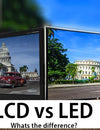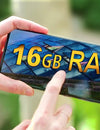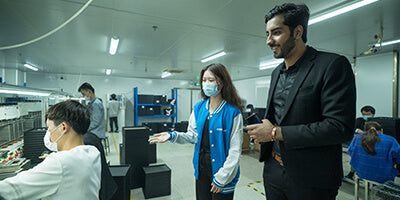
When choosing a mobile phone, we will consider the performance and the screen. Performance directly affects the experience of using, and the screen determines your sensory experience. However, there are a lot of mobile phone screen parameters such as size, LCD, OLED, resolution and so on. Today, let’s understand some common screen parameters and how to judge the quality of the screen through the parameters.

Resolution & Pixel Density
Resolution refers to the number of pixels in the horizontal and vertical directions, the unit is px, 1px=1 pixel. In the case of the same screen size, the higher the resolution, the clearer the screen and the finer the iamge. Of course, high resolution also means high power consumption. Currently, the resolutions of mainstream mobile phones are 2K, 1080P, and 720P. There are also mobile phones with 4K resolutions such as Sony Xperia XZ2 Premium. Generally speaking, 1080P resolution for mobile phones is enough. If you want to pursue the ultimate picture experience, you can choose 2K, but the power consumption will also increase.
In addition to resolution, there is another parameter used to measure the clarity of the screen, which is ppi (pixel density), and ppi represents the number of pixels per inch. Generally speaking, the larger the ppi of the screen, the clearer the picture. 300ppi is the recognition limit of the human eye. The ppi of the current mobile phone screen is higher than this value, and the human eye cannot see the difference.

Brightness & Contrast
The level of brightness determines the effect of using the mobile phone outdoors. It is generally believed that the brightness of the screen is greater than 400 nits and can be used normally. The brightness of the mainstream flagship mobile phone screen is above 500 nits.
Contrast is the ratio of the brightness of the brightest point (white) to the darkest point (black) at the same point on the screen. A high contrast ratio means relatively high brightness and vivid colors.

LCD and OLED
Currently, mainstream smart phone screen display technologies can be divided into two categories: LCD (liquid crystal display) and OLED (organic light-emitting diode). LCD needs the support of backlight when displaying, and the light must pass through two layers of glass, and pass through substrate and various optical films, imaging films, and color filters to generate polarized light, which will inevitably lose brightness and color. Common LCD screens are TFT-LCD and IPS-LCD. Unlike LCD, OLED does not require backlight support, it has self-illumination, and has the advantages of wide viewing angle, high contrast, low power consumption, high response rate, full color, and simple manufacturing process.

Screen refresh rate
Refresh rate refers to the number of times the screen is refreshed per second. The more refresh times, the smoother the screen will look. At present, the common mobile phone screen refresh rate is generally 60Hz, and some high refresh rate mobile phones can reach 90Hz and 120Hz. The increased refresh rate makes scrolling through apps and swiping through menus feel smoother, more responsive, and with less motion blur.

Color gamut
Color gamut is the entire range of colors and tones achievable by an imaging system. It refers to the range area formed by the number of colors that can be expressed by a certain device (such as a screen display device, printer or printing device, etc.). The colors of the visible spectrum in nature form the largest color gamut space. The color gamut space contains all the colors that the human eye can see.

DC dimming and PWM dimming
DC dimming controls the display brightness by adjusting the screen voltage or electric current, that is, changing the power. PWM dimming solves the problem of DC dimming with low brightness. PWM dimming can control the screen to flash alternately at a certain frequency without changing the power, and use the visual residual effect of the human eye to achieve the effect of continuous display. To put it simply, PWM dimming is to continuously alternate from switch on, switch off and change the brightness of the screen by changing the alternation time. At present, some mainstream mobile phones have added the function of DC dimming in the settings. However, this is not an authentic DC dimming. It is just an algorithm that makes the screen work at the highest frequency of flickering regardless of the brightness, thereby reducing the stimulation of visual cells. The one with strobe is PWM dimming, and the one without strobe is DC dimming.

Touch sampling rate
The touch sampling rate is aimed at the touch sensitivity of the screen, the higher the touch sampling rate, the higher the touch sensitivity of the screen. A high touch sampling rate is very helpful for the gaming experience of mobile phones, and can reduce the user's touch delay.

About Oriwhiz
Oriwhiz is a mobile phone LCD/OLED screen and other phone spare parts' manufacturer(factory) which is located in Shenzhen China.We are cell phone display wholesaler(Chinese supplier), offer OEM and ODM service to customers all over the world. Our products have ISO9001,CE,FCC,ROSH certificate. All of our products are manufactured by brand new materials and 100% quality test before shipping. We promise our best quality products will be delivered to our clients on time. We have professional customer service and welcome inquiry any time. Our main products include: iPhone LCD,iPhone Charging Port,iPhone Front Camera,iPhone Back Camera,iPhone ear speaker,iPhone Battery.etc.Not only iPhone related products,we also have mobile phone parts for Samsung,Huawei,Xiaomi Oppo,Vivo etc.























